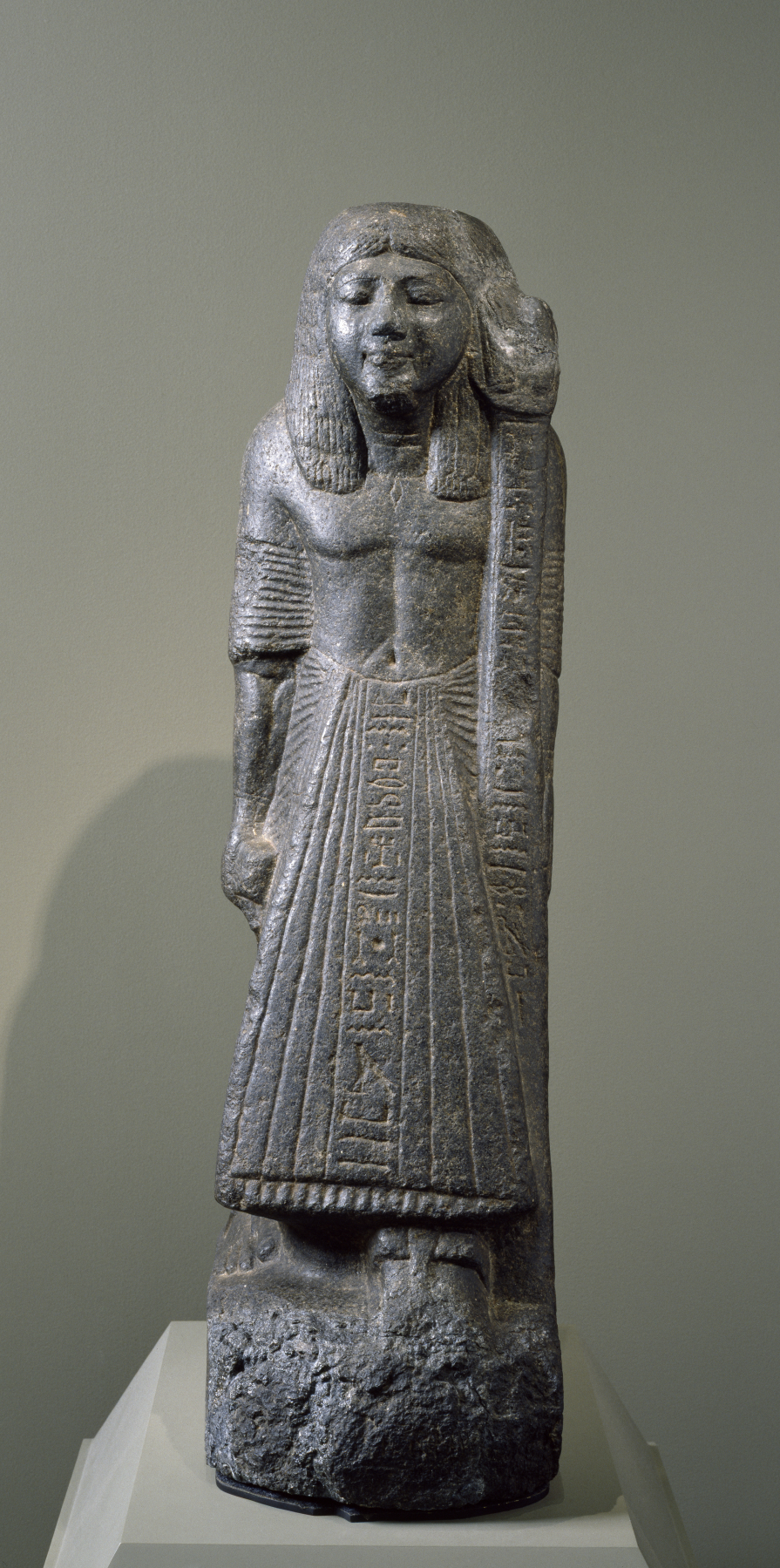Statue of a Standard Bearer: Hor-nakht
(Ancient Egypt and Nubia )
Shown in the elaborate wig and gown of a New Kingdom courtier, Hor-nakht is depicted as a participant in a temple procession, carrying the standard of a ram-headed deity, perhaps Amen-re, in his left hand. The presence of an "ankh," or life sign, in his right hand is unusual for a statue that does not represent either a king or a god. In this case, it may be an item used in temple ceremonies. The statue's inscriptions request benefits for Hor-nakht from the gods Amen-re and Osiris, including life, prosperity, and health.
Provenance
Provenance (from the French provenir, 'to come from/forth') is the chronology of the ownership, custody, or location of a historical object. Learn more about provenance at the Walters.
Henry Walters, Baltimore [date and mode of acquisition unknown]; Walters Art Museum, 1931, by bequest.
Exhibitions
| 2004-2005 | Pharao siegt immer: Krieg und Frieden im Alten Ägypten (Pharaoh is Always Winning: War and Peace in Ancient Egypt). Gustav-Lübcke-Museum, Hamm; Hamburger Museum for Archaeology, Helms Museum, Hamburg; Reiss-Engelhorn Museum, Mannheim, Mannheim. |
Conservation
| Date | Description | Narrative |
|---|---|---|
| 7/15/1959 | Treatment | cleaned |
| 7/14/1967 | Treatment | cleaned |
| 7/20/1970 | Treatment | cleaned |
| 6/24/1971 | Treatment | cleaned |
| 4/8/1999 | Treatment | cleaned; loss compensation |
| 4/8/1999 | Examination | examined for condition |
| 9/23/2002 | Loan Consideration | examined for loan |
Geographies
Egypt, Delta, Tell el-Belamun (Place of Origin)
Measurements
30 11/16 x 8 7/16 x 13 3/16 in. (78 x 21.5 x 33.5 cm)
Credit Line
Acquired by Henry Walters, by 1931
Location in Museum
Not on view
Accession Number
In libraries, galleries, museums, and archives, an accession number is a unique identifier assigned to each object in the collection.
In libraries, galleries, museums, and archives, an accession number is a unique identifier assigned to each object in the collection.
22.105


